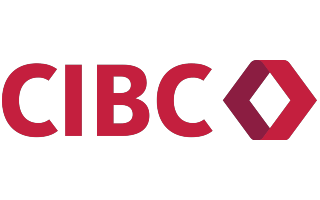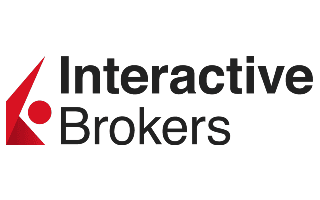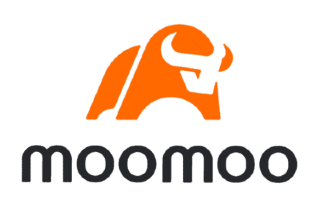Whether you’ve saved over the years, sold an asset, or received a gift, $50,000 is a good chunk of change. Investing it is a good way to make that money grow, but how should you invest your $50K? Read our guide below to learn our top 5 strategies on how and where to invest $50,000 in Canada.
How to build a $50,000 investment portfolio
What should your $50K portfolio look like? It depends on several factors like your age, goals, risk tolerance and timeline.
Your investing goals will likely be more aggressive in your 20s to 30s than they will be in your 50s. If you’re in your 30s and looking to build a portfolio aimed for growth, this is what it may look like:
| Investment type | Percentage |
|---|---|
| GICs and bonds | 5% to 20% |
| Stocks, ETFs and mutual funds | 50% to 75% |
| Peer-to-peer lending, real estate and alternative investments | 0 to 25% |
Before you invest $50,000 in Canada
There are a few financial boxes you should check off before you invest $50,000:
- Build an emergency fund. We recommend keeping 3-6 months of expenses in a high-yield savings account, so it’s available when life throws an unexpected curveball.
- Save for your kid’s education. If you have children, consider setting aside a portion of the $50K to save for post-secondary education in an RESP.
- Pay off debt. It’s always best to pay off high-interest debt before you invest because you pay more in interest than you’d earn in any investment vehicle.
- Do a self-assessment. How comfortable are you with risk, really? Can you invest for yourself, or would you prefer someone else’s advice? Do your goals align more with passive or active investing? These are all things to ask yourself before you start investing your $50K.
1. Invest in stocks, ETFs and more with a self-directed trading account
The stock market can be a great way to grow your wealth, as long as you’re comfortable making your own trades. You can invest in any combination of stocks, ETFs, mutual funds, bonds, and more.
Pros
- Low-cost online brokers. Many online brokers offer low fees, small minimum investments and commission-free trades.
- Comprehensive options. You can invest in a range of stocks, bonds, mutual funds and ETFs.
- Easy to diversify. Spread out your risk by investing in ETFs and low-cost index funds.
- Beats inflation. The stock market produces an average 5.6% yearly return (taking into account inflation), making it a good way to accumulate wealth and stay ahead of the cost of living.
- Liquid investment. It’s easy to sell off some of your portfolio when you need it.
Cons
- Volatility. The stock market as a whole is very volatile and experiences daily dips and swings. However, different assets can mitigate overall stock market fluctuations.
- Can be risky. If you throw all your money in stocks instead of making a plan to diversify, you could lose all your money.
- Research is required. Depending on your level of skill and how comfortable you are with self-directed trading, you’ll need to do some research on the best assets for you.
- Watch out for fees. Some brokers charge hefty fees and commissions, which could eat into your profits.
Finder Score for stock trading platforms
To make comparing even easier we came up with the Finder Score. Trading costs, account fees and features across 10+ stock trading platforms and apps are all weighted and scaled to produce a score out of 10. The higher the score, the better the platform—it's that simple.
2. Invest in real estate
With $50K to invest, there are several ways you could invest in real estate. You could go through a company like Wealthsimple to purchase real estate investment trusts (REITs) through an exchange traded fund (ETD). Alternatively, you could connect with commercial property developers through a peer-to-peer lending platform like Lending Loop, or put a downpayment on a house and rent it out yourself.
Pros
- Passive income. Real estate is an attractive investment because it produces a steady flow of income.
- Plenty of options. With $50K, you can choose to invest in REITs, commercial properties or your own rental property.
- Safe options. If you want to invest in real estate in the safest way possible, you can purchase REITs, which are made up of hundreds of different properties and trade like stocks.
Cons
- May need accreditation. Some crowdfunding sites won’t let you directly invest in real estate without qualifying as an accredited investor.
- Possible risk of default. If you choose to invest in a single property, you could lose your money if it defaults.
- Illiquid investment. Real estate can’t be easily sold or converted to cash, so it’s not the best option if you’ll need your money soon.
3. Invest in bonds
If you plan on making a big purchase in the near future, such as buying a home or sending the kids to college or university, it may make sense to invest your money in bonds. Terms typically range from a few months up to 30 years.
Pros
- Little risk. In general, bonds are considered stable investments and carry less risk than other securities.
- Provide passive income. Bonds produce a steady, fixed income and offer higher returns than other safe investments like savings accounts.
Cons
- Risk varies. Government bonds are typically safer than corporate bonds, although this isn’t always the case. You’ll want to check what letter grade it was assigned by the credit rating agencies.
- Higher investment minimums. Unlike stocks, bond prices usually start at $1,000. But some can cost much more than that.
- Could lose value. Your bond could lose value if the issuing entity defaults or interest rates rise when you’re ready to sell.
4. Contribute to your RRSP (or Spousal RRSP)
If you’re looking to save for retirement, you can get a jump start by opening or contributing to your Registered Retirement Savings Account (RRSP). With this registered account, you can invest funds in stocks, bonds, ETFs, and mutual funds just like any other account type, but you will be able to take advantage of RRSP tax deferrals.
Pros
- Tax-deferred growth. You fund an RRSP with pre-tax money, so it can grow in the account without being subject to tax until you retire (when you’ll likely be in a lower tax bracket).
- Use funds to buy your first home. You can withdraw funds before you turn 71 for qualifying expenses, such as your first home (through the Home Buyers’ Plan) or certain educational expenses (through the Lifelong Learning Plan).
Cons
- Can’t use contributions or gains until retirement. You’ll pay a penalty if you withdraw RRSP funds before you’re 71 (with the exception of the Home Buyers’ Plan).
- Contribution limits. There is a yearly maximum to how much you can contribute to your RRSP, and penalties for over-contributing.
5. Invest with a robo advisor
If you’d like exposure to the stock market but you aren’t comfortable investing yourself, a robo advisor is a good alternative to a traditional adviser.
Pros
- Lower fees. Required fees and investment minimums are much lower than with a traditional financial adviser.
- Goals-based investing. Robo-advisors make algorithmic recommendations based on your goals, risk tolerance and investing timeline.
- Requires minimal time or effort. Robo-advisors keep your portfolio in tip-top shape by performing routine tax-loss harvesting and automatic rebalancing for you.
Cons
- Limited flexibility. You typically can’t choose your own investments. Your account is invested in a pre-made portfolio based on your risk tolerance, along with other factors, and is rebalanced to stay within your risk level.
- Not entirely personalized. Robo-advisors give advice based on the questions they ask you. But they can’t ask follow-up questions if your situation is unique.
- Managed by a computer. While you can still communicate with customer service (and many times, financial advisors), if you prefer face-to-face discussions about investing, this may not be the best option.
Bottom line
Investing $50K is a large sum of money, which means you have potential for larger returns and a more diversified portfolio. If you have multiple goals you’re trying to reach, splitting it up among different investments may be the best option for you. Take some time to map out your goals, risk tolerance, and strategies you’re willing to use to diversify your portfolio. Then, compare investment platforms until you find the best options for you.
How to invest 50000 dollars in Canada FAQs
More guides on Finder
-
Tastytrade Canada alternatives
Compare six trading platform alternatives to tastytrade for online stock investing in Canada.
-
Potash stocks
Want to invest in the potash industry? We’ve put together a list of potash stocks you should keep your eye on.
-
Wheat stocks
We’ve rounded up stats on some of the most popular wheat stocks, along with information on how these stocks compare and how to invest.
-
6 distillery stocks to watch
We’ve rounded up stats on some of the most popular distillery stocks, along with information on how they compare and how to invest.
-
7 trucking stocks to watch
We’ve rounded up stats on some of the most popular Trucking stocks, along with information on how they compare and how to invest.
-
9 luxury stocks to watch
We’ve rounded up stats on some of the most popular luxury stocks, along with information on how they compare and how to invest.
-
Best renewable energy stocks
These are the best renewable energy stocks to buy now in Canada.
-
Best stocks to buy right now in Canada
Finder’s unique algorithm found the 20 best TSX stocks to buy right now.
-
CIBC Investor’s Edge Review
Backed by one of Canada’s Big Banks, CIBC Investor’s Edge offers many ways to invest. But it’s not the cheapest platform on the market.
-
eToro alternatives in Canada
You can’t trade on eToro in Canada, so check out these six alternative platforms.




